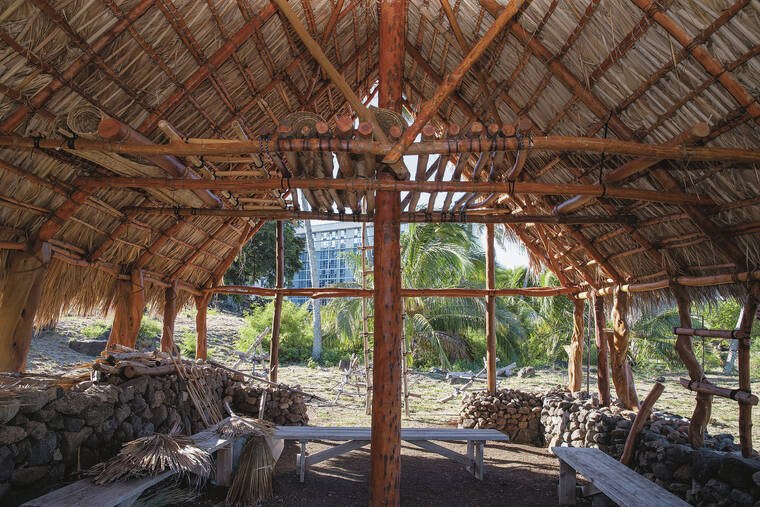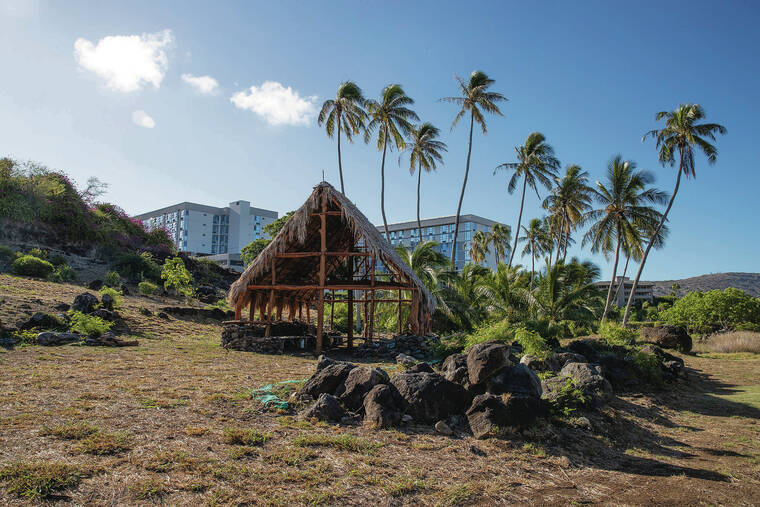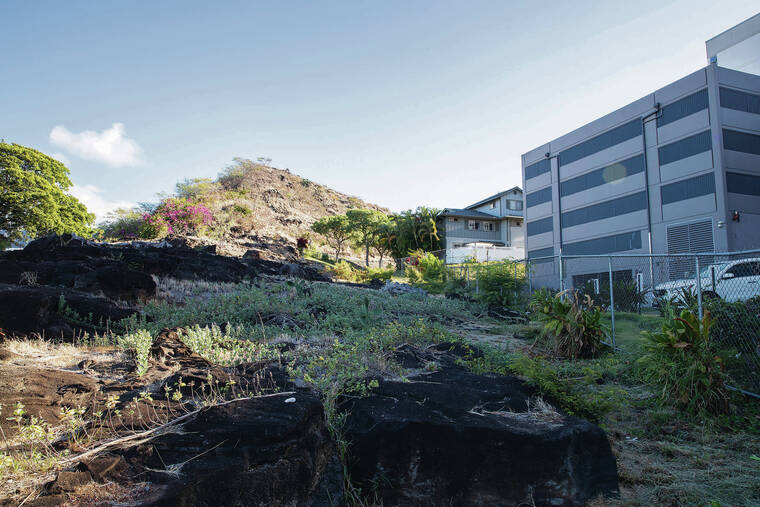In an effort to better protect historic cultural sites, the Honolulu City Council is considering a measure that would activate the Historic Preservation Commission, which has remained dormant for the past 29 years.
Although the City Council approved the creation of the Historic Preservation Commission in 1993,
it was never staffed, and no one has ever been appointed to fill the commissioner positions.
Honolulu is the only major county in the state that does not have a commission of this type and largely relies on the Department of Planning and Permitting as well as the State Historic Preservation Division to review projects and ensure that development does not result in the destruction of historic sites such
as Hawaiian heiau or iwi kapuna.
However, because DPP is a city department and SHPD is within a state department, it has caused communication barriers that have sometimes resulted in historic sites falling through the cracks.
“They kind of point the finger at each other while being in front of the Council,” Council Chair Tommy Waters said.
“But ultimately, I’m trying to protect historic sites. And if we keep going the way we’re going, there’s going to be more and more desecration.”
Waters and Council member Esther Kia‘aina introduced Bill 44, which would amend some of the requirements of the Historic Preservation Commission, including maintaining a public registry of historic sites and making recommendations to SHPD about how to minimize the impacts of projects on historic sites. Both Waters and Kia‘aina also have renewed the effort, urging the city administration to actually staff the commission and get it operational.
There have been several instances recently that Waters said illustrate the need for this type of commission because DPP has been unable to handle keeping track of and surveying properties for historic sites.
In 2021, DPP granted permits to demolish a home in Niu Valley that had a Hawaiian heiau on it. Concerned community members saw the work happening on the property, and the Office
of Hawaiian Affairs got involved, voicing their concern to DPP. However, by then the property owners already had destroyed parts of the rock wall.
In another instance in 2018, iwi kapuna were found during construction on an Aina Hina hillside. It was revealed that DPP granted permits to a developer despite having being told by SHPD over a decade before that no permits should be issued for the property without an archaeological study. However, DPP misplaced the letter and granted the permits.
Because of these incidents, Anne Marie Kirk
developed a website, kokuaneeded.org, which is meant to help concerned community members navigate the complicated system of reporting potential historic sites to SHPD and DPP.
“It’s a website for community members. Say something like Niu Valley happens, you don’t know who to call, right? And so it tells you the steps of what to do,” she said.
“These are the rules that are in place; these are the things that you’re able to do to help that situation rather than making one call and getting frustrated, and not knowing the process.”
Kirk was part of Livable Hawai‘i Kai Hui, which was a community group that was able to actually obtain ownership of a property to protect the Hawea Heiau. The group worked between 2009 and 2014 to raise funds, largely through the city’s Clean Water and Natural Lands Fund, to save the heiau, which was under threat of being destroyed for development.
Kirk was supportive of activating the Historic Preservation Commission and hoped that it would result in better communication between the city and state to better preserve historic sites.
There are two different paths that can result in SHPD getting involved with a property. One is during the project planning process through an environmental impact statement or at the state Land Use Commission. Another is when something is discovered during development and reported to the
division.
The cultural resource or preservation commissions in all the counties, except Honolulu, serve as a sort of pre-screening process for SHPD, according to its administrator, Alan Downer.
“With the (commissions) on the neighbor islands, they have parties who are appointed because they have an interest in some expertise in these matters,” he said.
“So they can refer them (projects) to them (neighbor island commissions) and say, ‘What do you think?’ That gives them (projects) a sounder basis for saying yes or no, we send to SHPD.”
However, on Oahu, because the commission is not activated, it largely is left up to DPP to make those recommendations to SHPD.
“How they decide what to send and not send, it’s a mystery. It’s not clear to us how they make those decisions,” he said.
“They send us stuff that we review and go, ‘Why on earth would they send that to us?’ and then we’ll hear a complaint about something or that somebody will have encountered a burial and
reported it, and we’ll go, ‘Why didn’t this come to us?’ We’ve told them this area is a hot zone.”
Downer added that SHPD is a short-staffed operation and does not have the ability, aside from projects that are referred to it, to seek out potential issues on properties.
“We do not have the resources to be doing proactive identification,” he said.
“We’ve done that in the context of project reviews, but we just don’t have the time or personnel to do it independently.”
The state Legislature has approved 14 new positions within SHPD, and Downer is working on finding appropriate candidates for the positions.
City Managing Director Mike Formby said the law requires the DPP director
to exercise discretion as to when a project would involve a historical or cultural resource and send that over to SHPD. The Council approved funding for an archaeological position within DPP. The department is also working to hire someone for the job.
Another issue is that because the city does not have a commission, it is unable
to capture federal funding for historic preservation
like the other counties can. SHPD is required to pass along about $60,000 of federal grants through the National Parks Service to what is called Certified Local Governments. Only counties with cultural resource or preservation commissions are able to be Certified Local Governments. The Certified Local Governments can give a proposal to SHPD about what they want to do with the federal funds, such as conduct an archaeological search. SHPD will review it and then send it to the National Parks Service for approval. If the funds are not spent, Hawaii risks losing the money altogether.
Formby said that the city administration plans on trying to become a Certified Local Government within the National Parks Service
if the Historic Preservation Commission is set up.
“If we’re going to stand this commission up, we would absolutely want to take advantage of this program,” he said.
“One of the things we’ve done is invest in a grant program that includes grant software, HNL Grants. We started under the federal
relief funds, but it’s going to apply to all of our grant programs, and so it aligns with this type of grant funding that could come from SHPD through being a certified
local government.”
Formby hoped that if the Council passes this measure, the Historic Preservation Commission would be a partner to DPP to alleviate some of its workload.
“If we can stand up the Oahu Historic Preservation commission in a way that
it becomes part of doing things faster and better, in other words, being very respectful of things that need to be preserved but also improving the timelines to get things permitted, for us that’s a win-win,” he said.
“We don’t want to add
to the time it takes to get a
permit. … If the Council decides to pass this out, we want to work with Council in coming up with a commission that will help us do things better and faster. And I’m talking about the preservation side and the permitting side. So we want to find that sweet spot.”
OHA Community Engagement Director Capsun Poe urged the city to activate the commission. OHA worked with the other counties in Hawaii to set
up their commissions.
“The City and County of Honolulu is, unfortunately, the only county not participating in the program to protect and preserve historic and cultural properties,” he said.
“And what we mean by protected, is from irreparable harm. … These are the last vestiges of Hawaiian
cultural resources, so once they’re gone they’re gone.”
Poe thought there should be a model for historic preservation where SHPD gives broad direction, but that many of the decisions should be getting made at a city level through the Historic Preservation Commission.
“We can be additive in our solutions here, and that can be a good thing, like, if you can’t handle it or if you don’t have some resources, now Oahu can handle it,” he said.
“OHA is supportive of the commission and this effort to recommit to it. There’s really no reason for Honolulu not to have one.”








